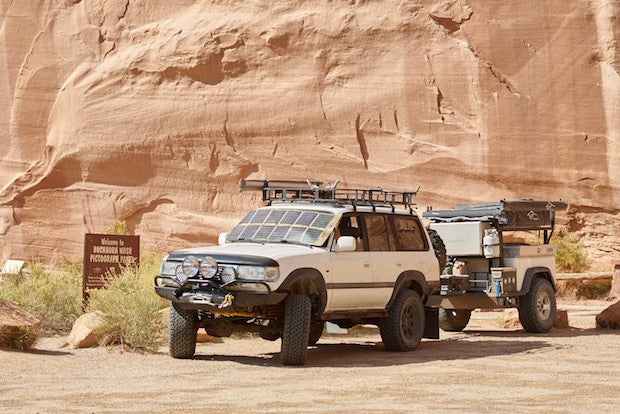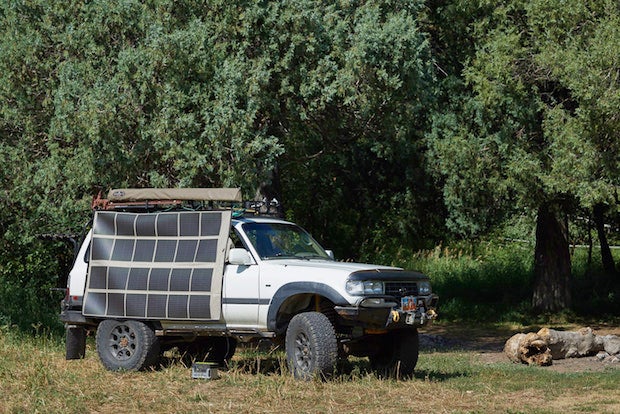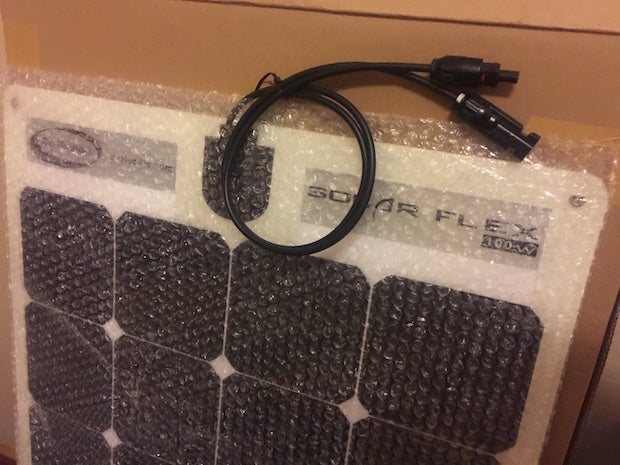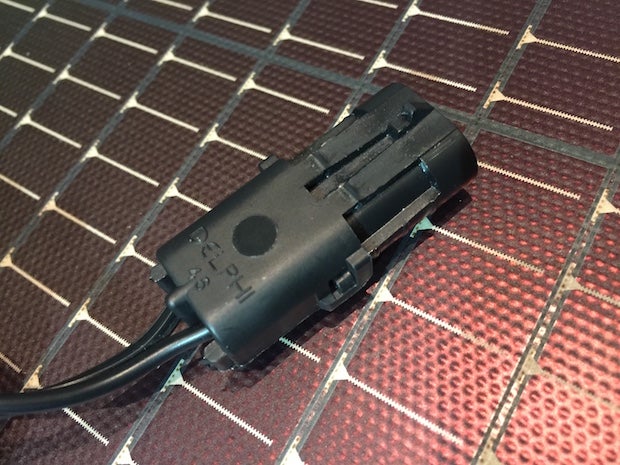Solar Power 101: Learning the Basics
Helping to harness the sun's power

Traveling off-road has, by definition, always meant being off grid. As supporting electrical devices - from iPads to fridges - have become more common, the need for reliable power sources when exploring the wilds has also grown. Fortunately the marketplace has responded with a wide range of solutions. And the most significant of those advances have come in regenerative power and systems to store and control the resulting electricity. For those who explore the backcountry, it's a great time to study the available options.
READ MORE: Dinoot Trailer: Building a DIY Off-Road Explorer
In this series we'll look at all forms of off-road electricity use and share reviews of several high quality solar options on the market, as well as the niche each fulfills. The reviews will cover a range of solar panels and components from leading manufacturers including P3 Solar, Solbian, PowerFilm, Go Power!, and Flexopower. So come back to the Gear Doctor for in-depth views on these products.
But before we get to those products, I'd like to give readers an introduction to solar power systems, and in the process ease some of the confusion that can surround this exciting topic. Off grid power is by-and-large referring to electricity. For the sake of simplicity, a system only has three main elements: storage, management and generation.
For this trio to work in sync, power demands, and the various elements should be matched to one another. As a result, it doesn't make much sense to get excited about individual elements, such as a solar panel, without having first looked at your overall electrical situation. The basis of one's demands is the devices that will be powered, and their usage. Each of which represents a demand.
Understanding the Basics
If you're not an electrician or otherwise gifted at understanding electrical systems, don't worry. A simple analogy that is easy to remember envisions amps like the gallons of gas in a fuel tank. Those amps can flow at various rates, and we refer to this flow, or pressure, as volts or voltage. In most vehicles the voltage of one's electrical system is 12v DC. The combination of the two—voltage and amperage—, like the combination of gas/diesel capacity along with pressure in a vehicle's fuel injection system, reveals the overall electrical flow amount we call wattage.

To more clearly denote the "fuel" in batteries a second term - amp hour or Ah - is used. Batteries' capacities are rated by their Ah, as well as other measurements. As opposed to cold cranking amps (CCA), which tells about a battery's ability to deliver the sudden burst of power necessary to start a vehicle's motor, Ah tells how much electricity a battery can deliver until depleted. This is especially important in deep cycle batteries, such as cordless tool batteries, which are meant to be depleted repeatedly in powering a device. The Ah rating of a battery is relative to the rate of draw. Hence a 100Ah battery, such as an Odyssey PC2150, can continuously deliver 5A of power for 20hr, or 1A for a full 100hr. For a more detailed explanation, consider this article.
These capacities and flow rates matter because electricity really is best thought of as a liquid flowing through 'pipes' (i.e., wires). That 100Ah battery only has so much 'liquid,' or electricity, in its capacity, and its depletion will depend upon the rate of draw you place on it. All of which may cause you to remember that you already have an electrical system on board, complete with means to attach loads ranging in size from a CB to a winch. The issue is that many such factory electrical systems weren't engineered for more than minor added demands, such as can be safely plugged into the factory 12v outlet (aka cigarette lighter). Upgrading is frequently necessary when you want to place greater demands on the system.
READ MORE: EvaKool RFE60 Off-Road Fridge Review
Next, keep in mind that your vehicle has an electrical system mostly meant for supplying loads that occur while its motor is running (especially driving). It will also have a mode for supplying some loads when the motor is off, and thus when the alternator is generating no electricity to the system. In both modes you have a given load occurring, a maximum stored electrical capacity (i.e., battery Ah), and possibly one or two more forms of power generation (e.g., alternator, solar panel). The loads likely to occur during either mode must be matched to the limits of the components handling storage and electricity generation in your system.
To create the right component match we need to list all electrical demands on the system. From that list you can gauge what system capabilities are needed. Here is a sampling of hypothetical demands that might be added over the standard unit of time, an hour:
Device Load
Fridge/freezer 3Ah (12hr typical usage; daily consumption 36A)
CB radio .5Ah (12hr typical usage; daily consumption 6A)
Winch 200Ah (.25hr typical usage; daily consumption 50A)
Water pump 7.5Ah (.25hr typical usage; daily consumption ~2A)
LED camp lights 1.5Ah (5hr typical usage; daily consumption 7.5A)
Total: 101.5A
Generally speaking, a winch is the single largest load that will occur in a 4x4, either while the motor is running or not. It's an infrequent usage, but it is highly demanding, and a vehicle's alternator (typically rated to produce ~90A/hr) cant keep pace with the draw a winch is demanding. Hence the advent of dual battery systems, which expand the run time for winch operation by adding storage. Afterwards that stored electricity is 'refilled' as the alternator charges the batteries depleted during your winch fest.
The same principle is true for a vehicle's non-running mode. Loads like stereos will draw down battery storage, and the depth of capacity, coupled with the ability to recharge via a solar panel or other source, must be matched if you are to avoid a dead battery. Because the number of gadgets and devices that accompany an off-road trip have grown, systems need to be more robust in capacity as well as durability.
Fortunately, battery storage has improved in the past few decades so that today there are numerous deep cycle options. In contrast to starting batteries, these are engineered to withstand countless deep depletion cycles. In some rare cases, such as the Odyssey line of batteries, very high quality batteries are available that are designed to serve both starting and deep cycle purposes. This presents a great deal of versatility, though it comes at premium price. Another advance in batteries has been in how they are configured in vehicles. The proliferation of dual battery systems for under the hood, as well as accessory batteries configured within off-road trailers, has gained steam in recent years. All such setups still require a management system, which will typically include, at a minimum, an isolating device in most dual battery configurations. This safeguard helps reduce the odds of both batteries being depleted. It does so by isolating one battery from loads, preserving its capacity for later, and thus avoiding the potential for leaving the vehicle stranded.
The other role of management systems is the proper monitoring, wiring, and protection of the system. A smart battery management system, such as the high-end models produced by Genesis Offroad, bundle all of these features into one device. Such systems preserve starting capabilities while optimizing other power applications, all while showing battery status. In the case of Genesis, it also uses an intelligent system programmed to direct current from the alternator to where it's most needed.
For all of the above improvements in redundant/protective automotive electrical systems, the most exciting changes may be coming from the power generation side. Historically, alternators have been the only means by which a vehicle can regain lost electricity. While these indispensable under hood components have obviously filled most travelers' needs for a hundred years, today's consumers (and their modern vehicles) are the most power hungry in history.
These increased power demands, when coupled with a desire to also stay put for several days or longer, give rise to needs for producing electricity by means other than driving. The alternative to the alternator in such situations has been a portable gas generator. Costly, loud, bulky and pollution-emitting, they've never been a great solution, but they were the only game in town. Until recently that is. A revolution in portable regenerative power is changing our ability to explore the backcountry, and how long we can stay off-grid. Those solutions rely on the free wattage pouring out of the Sun.
Stay tuned for our next Gear Doctor article, when we dive headfirst into how to setup an off-road solar grid. Read the second installment by hitting the link below.
Solar 102: Setting Up an Overland and Off-Road
About the Gear Doctor
Sean Michael has been designing, ab/using and testing outdoor gear since the 1980's, and began gear reviews for Off-road.com in 2000. Today lives in the Northern Wasatch Mountains, where he is Director of the Outdoor Product Design & Development program at Utah State University. Follow his trips and gear at thegeardoctor in Instagram.




 Your Privacy Choices
Your Privacy Choices